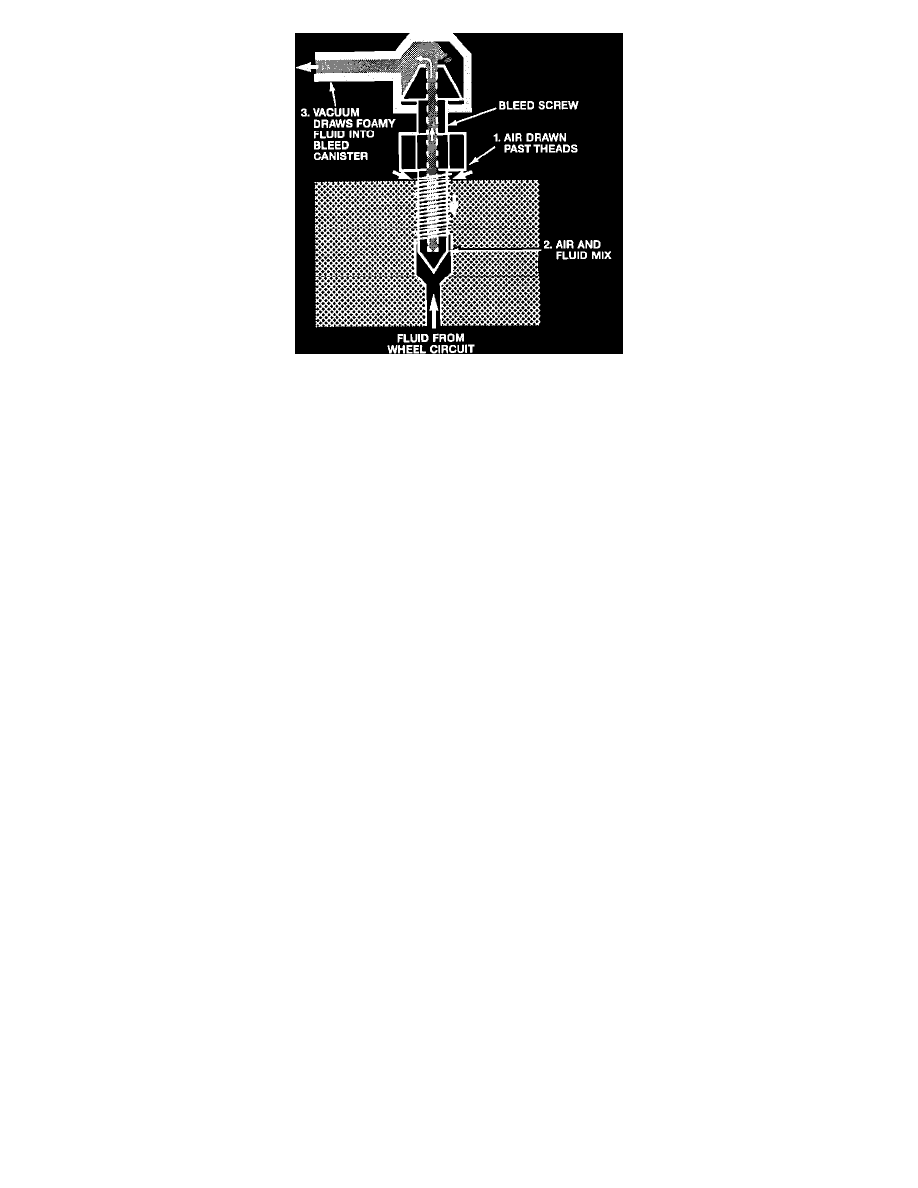Syclone V6-262 4.3L Turbo (1991)

Normal Fluid Foaming Conditions
1.
Connect Vacuum Bleeder (GM Dealer Equipment #85 00001) to a source of compressed air.
2.
Uncap the brake master cylinder reservoir.
3.
Depress the level on the top of the bleeder tool to create a vacuum. Use the bleeder hose to vacuum the old brake fluid out of the reservoir.
4.
Fill the master cylinder reservoir with fresh brake fluid of the specified type. Periodically check the reservoir fluid level to avoid running it dry.
5.
Clean the bleeder screws and bleed holes, if necessary.
6.
Connect the vacuum bleeder hose to the bleed screw, and open the bleed screw slightly.
7.
Depress the vacuum bleeder lever to create vacuum and begin the bleeding process according to the brake bleeding procedure. Watch the flow
of brake fluid; continue bleeding until about 10 seconds after clean fluid flows into the bleeder container.
8.
Release the vacuum bleeder lever and close the bleed screw.
9.
Repeat the procedure as necessary to fully bleed the brake hydraulic system.
10.
Check brake pedal feel for firmness; repeat the bleeding procedure as necessary.
NOTE:
It is normal to observe bubbles or foam in the vacuum hose when using the vacuum bleeder. This air is drawn into the fluid flow from around the bleed
screw threads. It has no effect on bleeding.
4WAL Bleeding Procedure
*** THIS PROCEDURE HAS BEEN UPDATED BY T.S.B. #91-5E-23 (GMC) AND #91-74-5 (CHEVROLET), SEPTEMBER, 1990
Note: Do not use DOT. 5 (silicone) brake fluid. System damage may result. It is not necessary to install the bleed valve tools on the Electronic
Hydraulic Control Unit (EHCU) or open the side internal bleed screws, if you are not replacing the EHCU. The EHCU does not have to be bled, unless
it is replaced.
Caution: Failure to follow the system bleeding procedure accurately will result in immediate soft pedal or soft pedal after the first antilock
stop, as well as stored codes. The ignition switch must be off throughout bleeding to prevent codes from being set.
It is necessary to bleed the brake system whenever air is introduced into the system. If the EHCU module has not been replaced normal brake system
bleeding procedures may be used. If the EHCU has been replaced, or if it is suspected that air has been introduced into the EHCU the following steps
should be taken.
Important
